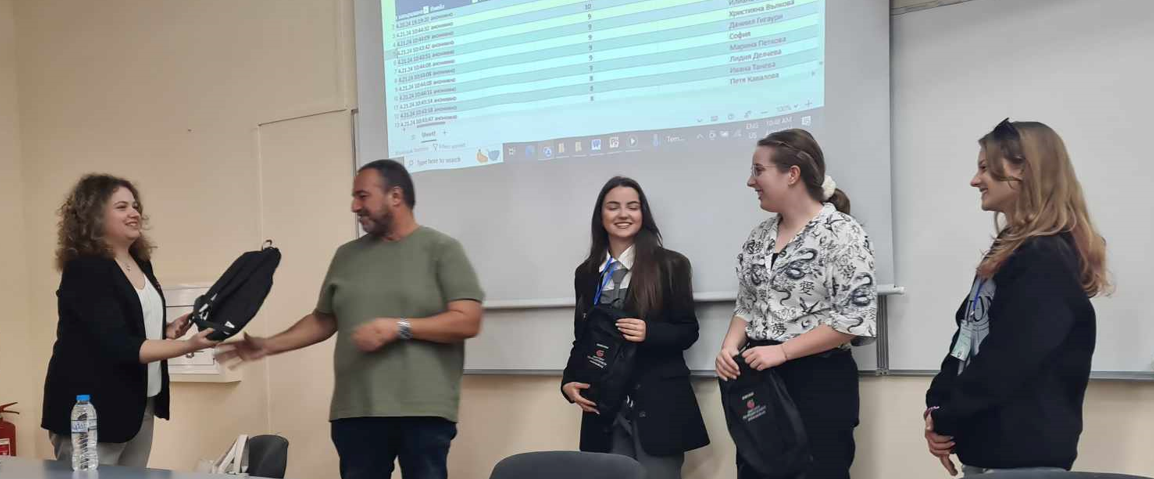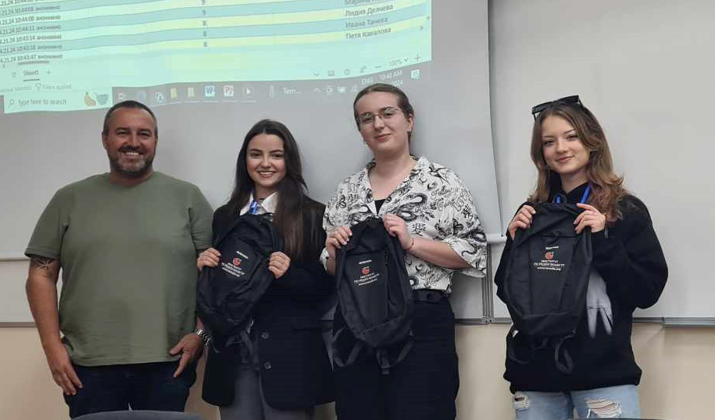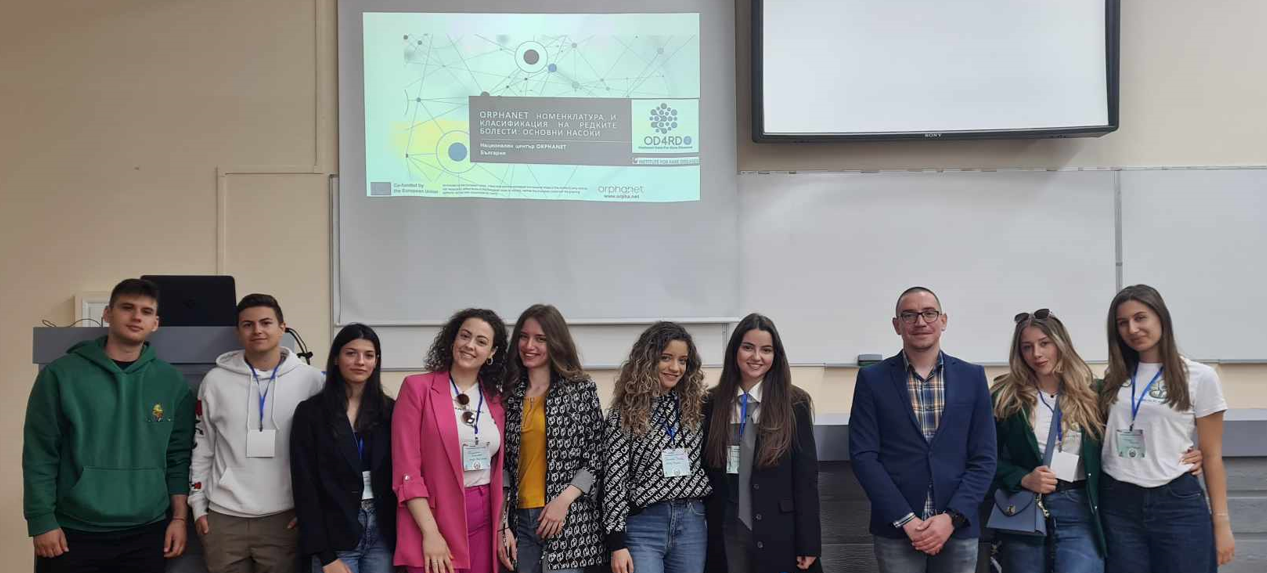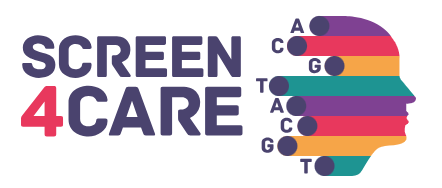 Rare diseases have become an increasingly important public health priority due to their collective prevalence. While the approval of orphan drugs requires supportive data from stringent pre-market studies, these data lack the ability to describe the causes of treatment response heterogeneity. Investigation of the pharmacogenomics can potentially lead to the development of new therapeutics, help inform rational use criteria in drug policy, and improve the understanding of underlying disease pathophysiology. In the context of rare diseases where cohort sizes are smaller than ideal, ‘small data’ and ‘big data’ approaches to data collection and analysis should be combined to produce the most robust results. This article presents the importance of studying drug response in parallel to other research initiatives in rare diseases, as well as the need for international collaboration in the area of rare disease pharmacogenomics. Read the full article here.
Rare diseases have become an increasingly important public health priority due to their collective prevalence. While the approval of orphan drugs requires supportive data from stringent pre-market studies, these data lack the ability to describe the causes of treatment response heterogeneity. Investigation of the pharmacogenomics can potentially lead to the development of new therapeutics, help inform rational use criteria in drug policy, and improve the understanding of underlying disease pathophysiology. In the context of rare diseases where cohort sizes are smaller than ideal, ‘small data’ and ‘big data’ approaches to data collection and analysis should be combined to produce the most robust results. This article presents the importance of studying drug response in parallel to other research initiatives in rare diseases, as well as the need for international collaboration in the area of rare disease pharmacogenomics. Read the full article here.
Publications
Prevalence and genotypic associations of epilepsy in Prader-Willi Syndrome: A systematic review and meta-analysis
 The objective of this study is to estimate the prevalence of epilepsy and febrile seizures and their association with genotype, i.e., 15q11-q13 deletions, uniparental chromosome 15 disomy and other mutations, in the population with Prader-Willi syndrome (PWS).
The objective of this study is to estimate the prevalence of epilepsy and febrile seizures and their association with genotype, i.e., 15q11-q13 deletions, uniparental chromosome 15 disomy and other mutations, in the population with Prader-Willi syndrome (PWS).
A systematic search of Medline, Scopus, Web of Science and the Cochrane Library is conducted. Meta-analyses of the prevalence of epilepsy and febrile seizures and their association with genotype are performed. Fifteen studies are included. The prevalence of epilepsy is 0.11 (0.07, 0.15), similar to the prevalence of febrile seizures, with a prevalence of 0.09 (0.05, 0.13).
The prevalence of seizure disorders in Prader-Willi syndrome is higher than in the general population. In addition, deletions in 15q11-q13 may be associated with a higher risk of seizure disorders. Therefore, active screening for seizure disorders in PWS should improve the lives of these people. In addition, genotype could be used to stratify risk, even for epilepsy, although more studies or larger sample sizes are needed. Read the full article here.
Changes in the Socio-economic Burden of Epidermolysis Bullosa in Europe: Online Questionnaires Now Available
 Institute for Rare Diseases advances with it’s 11-th EU project – BUR-EB: Changes in the Socio-economic Burden of Epidermolysis Bullosa in Europe. Epidermolysis Bullosa (EB) is a rare genetic skin disorder that places an enormous social and economic burden on patients and their families. Studies on this burden are scarce. The BUR-EB project aims to estimate the socio-economic burden of EB in 6 EU countries (Spain, France, Germany, Italy, Hungary and Bulgaria), and to compare it to data collected 10 years ago in the BURQOL-RD project.
Institute for Rare Diseases advances with it’s 11-th EU project – BUR-EB: Changes in the Socio-economic Burden of Epidermolysis Bullosa in Europe. Epidermolysis Bullosa (EB) is a rare genetic skin disorder that places an enormous social and economic burden on patients and their families. Studies on this burden are scarce. The BUR-EB project aims to estimate the socio-economic burden of EB in 6 EU countries (Spain, France, Germany, Italy, Hungary and Bulgaria), and to compare it to data collected 10 years ago in the BURQOL-RD project.
Data related to the impact of EB on every-day life are collected from affected persons and their caregivers via an anonymous survey in collaboration with clinicians and patient organizations (DEBRA). Based on the results, information materials will be developed to help patients and their families cope better with the illness.
The online questionnaires for Bulgaria, aimed at patients with EB (Epidermolysis Bullosa) and their caregivers, are now available for completion.
If You are affected by EB and live in Bulgaria, please participate in our survey at the following links:
Adult Patient and Caregiver Questionnaire:
➡️ https://survey.saosl.com/index.php/382685?lang=bg
Pediatric Patient and Caregiver Questionnaire:
➡️ https://survey.saosl.com/index.php/513356?lang=bg
BUR-EB offers an opportunity to observe how the social and economic impact of EB has changed over the last decade and how these changes could be related to the health and social policies implemented during that period.
More info you can find on the BUR-EB project website.
Multinational experience with next-generation sequencing: opportunity to identify transthyretin cardiac amyloidosis and Fabry disease
 Sarcomeric hypertrophic cardiomyopathy (HCM) must be differentiated from phenotypically similar conditions because clinical management and prognosis may greatly differ. Patients with unexplained left ventricular hypertrophy require an early, confirmed genetic diagnosis through diagnostic or predictive genetic testing. In this study the feasibility and practicality of the application of a 17-gene next-generation sequencing (NGS) panel to detect the most common genetic causes of HCM and HCM phenocopies, including treatable phenocopies, and report detection rates are tested. Identification of transthyretin cardiac amyloidosis and Fabry disease is essential because of the availability of disease-specific therapy. Early initiation of these treatments may lead to better clinical outcomes.
Sarcomeric hypertrophic cardiomyopathy (HCM) must be differentiated from phenotypically similar conditions because clinical management and prognosis may greatly differ. Patients with unexplained left ventricular hypertrophy require an early, confirmed genetic diagnosis through diagnostic or predictive genetic testing. In this study the feasibility and practicality of the application of a 17-gene next-generation sequencing (NGS) panel to detect the most common genetic causes of HCM and HCM phenocopies, including treatable phenocopies, and report detection rates are tested. Identification of transthyretin cardiac amyloidosis and Fabry disease is essential because of the availability of disease-specific therapy. Early initiation of these treatments may lead to better clinical outcomes.
In this international study, peripheral dried blood spot samples from patients of cardiology clinics with an unexplained increased left ventricular wall thickness (LVWT) of ≥13 mm in one or more left ventricular myocardial segments (measured by imaging methods) were analyzed at a central laboratory.
The overall diagnostic yield of 24.7% indicates that the screening strategy effectively identifies the most common forms of HCM and HCM phenocopies among geographically dispersed patients. The results underscore the importance of including ATTR-CA (TTR variants) and FD (GLA variants), which are treatable disorders, in the differential diagnosis of patients with increased left ventricular wall thickness of unknown etiology. Read the full article here.
44th National Meeting of the Association of Medical Students in Bulgaria and Institute for Rare Diseases
The 44th National Meeting of the Association of Medical Students in Bulgaria took place from April 19th to 21st, 2024, at the Medical Faculty of Trakia University in Stara Zagora. The event gathered 250 medical students from all Medical Universities. Prof. Dr. Rumen Stefanov, Assoc. Prof. Dr. Eleonora Hristova, and Asst. Dr. Kostadin Dimitrov from Institute for Rare Diseases and Medical University of Plovdiv participated in the event.
Prof. Dr. Rumen Stefanov and Assoc. Prof. Dr. Eleonora Hristova presented the main challenges of rare diseases and medical education, highlighting the lack of knowledge about rare diseases and potential sources for qualification of medical students. As part of their lecture, an educational quiz on rare diseases and orphan drugs was held, and three students: Polina Ignatova (AMSB-Sofia Medical University), Meriam Chilingirova and Boryana Gospodinova (AMS-Plovdiv)) with outstanding knowledge were awarded and granted participation in the 15th National Conference on Rare Diseases and Orphan Drugs, 13-19.09.2024.


Assistant Dr. Kostadin Dimitrov led the workshop “Orphanet Nomenclature and Classification of Rare Diseases: Basic Guidelines,” and demonstrated the most comprehensive global databases for rare diseases – Orphanet, directed towards both patients with rare diseases and medical specialists. The advantages of Orphanet’s specific nomenclature for rare diseases were presented, ensuring visibility of rare diseases in health information systems, operational compatibility between healthcare facilities, regions, and countries, and allowing evidence-based decisions based on comprehensive epidemiological data. Dr. Dimitrov provided a practical demonstration illustrating how medical professionals can access and search precise information about rare diseases on the Orphanet digital platform.

 Effective gene therapy approaches have been developed for many rare diseases, including inborn errors of immunity and metabolism, haemoglobinopathies and inherited blindness. Despite successful pre-clinical and clinical results, these gene therapies are not widely available, primarily for non-medical reasons. Lack of commercial interest in therapies for ultra-rare diseases, costs of development and complex manufacturing processes required for advanced therapy medicinal products (ATMPs) are some of the main problems that are restricting access. The complexities and costs of navigating the regulatory environments in different jurisdictions for treatments that affect small numbers of patients is a problem unique to ATMPS for rare and ultra-rare diseases. This article outlines some of the challenges faced in accessing gene therapy for rare diseases, along with potential solutions aimed at improving accessibility. Read the full article here.
Effective gene therapy approaches have been developed for many rare diseases, including inborn errors of immunity and metabolism, haemoglobinopathies and inherited blindness. Despite successful pre-clinical and clinical results, these gene therapies are not widely available, primarily for non-medical reasons. Lack of commercial interest in therapies for ultra-rare diseases, costs of development and complex manufacturing processes required for advanced therapy medicinal products (ATMPs) are some of the main problems that are restricting access. The complexities and costs of navigating the regulatory environments in different jurisdictions for treatments that affect small numbers of patients is a problem unique to ATMPS for rare and ultra-rare diseases. This article outlines some of the challenges faced in accessing gene therapy for rare diseases, along with potential solutions aimed at improving accessibility. Read the full article here.
 Fabry Disease (FD) is a genetic disease caused by a deficiency in the activity of lysosomal galactosidase A (α-GalA), an enzyme responsible for the catabolism of globotriaosylceramide (Gb3). FD can affect multiple organs and result in various symptoms, including renal, cardiovascular, neurological, cutaneous, and ophthalmic manifestations. Due to the nonspecific symptoms and the rarity of FD, it is often diagnosed late in life. However, introducing targeted therapies such as enzyme replacement therapy (ERT) and chaperone therapy has significantly improved FD’s natural history and prognosis by restoring α-GalA enzyme activity.
Fabry Disease (FD) is a genetic disease caused by a deficiency in the activity of lysosomal galactosidase A (α-GalA), an enzyme responsible for the catabolism of globotriaosylceramide (Gb3). FD can affect multiple organs and result in various symptoms, including renal, cardiovascular, neurological, cutaneous, and ophthalmic manifestations. Due to the nonspecific symptoms and the rarity of FD, it is often diagnosed late in life. However, introducing targeted therapies such as enzyme replacement therapy (ERT) and chaperone therapy has significantly improved FD’s natural history and prognosis by restoring α-GalA enzyme activity.
Despite the advancements, there are limitations to the currently available therapies, which has prompted research into new potential treatments for FD, including alternative forms of enzyme replacement therapy, substrate reduction therapy, mRNA therapy, and genetic therapy. In this article, the epidemiology, pathophysiology, and treatment of FD is analyzed, with particular emphasis on promising therapeutic opportunities that could shift the treatment of this rare disease from a standardized to a personalized approach soon. Read the full article here.
Availability and Access to Orphan Drugs for Rare Cancers in Bulgaria: Analysis of Delays and Public Expenditures
 Kostadin Kostadinov, Ivelina Popova-Sotirova, Yuliyana Marinova, Nina Musurlieva, Georgi Iskrov and Rumen Stefanov, as part of the Institute for Rare Diseases and Medical University – Plovdiv examine the availability and access to orphan drugs for rare cancers in Bulgaria, aiming to respond to the need for its improvement. This research provides valuable insights into the challenges faced by patients with rare cancers in accessing treatment and has been published in the prestigious international journal “Cancers” (Impact factor: 5.2).
Kostadin Kostadinov, Ivelina Popova-Sotirova, Yuliyana Marinova, Nina Musurlieva, Georgi Iskrov and Rumen Stefanov, as part of the Institute for Rare Diseases and Medical University – Plovdiv examine the availability and access to orphan drugs for rare cancers in Bulgaria, aiming to respond to the need for its improvement. This research provides valuable insights into the challenges faced by patients with rare cancers in accessing treatment and has been published in the prestigious international journal “Cancers” (Impact factor: 5.2).
Rare cancers are defined by an annual incidence of fewer than 6 per 100,000. Bearing similarities to rare diseases, they are associated with substantial health inequalities due to diagnostic complexity and delayed access to innovative therapies. This situation is further aggravated in Southeastern European countries like Bulgaria, where limited public resources and expertise underscore the need for additional policy and translational research on rare cancers.
This study aims to explore the availability and access to orphan drugs for rare cancers in Bulgaria for the period of 2020–2023. The data from both the European Union and national public sources is cross-compared to evaluate the number of available and accessible orphan drugs for rare cancers, the delay from market authorization to reimbursement, the dynamics of public expenditures, and regional disparities in access across the country. The main characteristics of oncological and non-oncological orphan drugs are juxtaposed as well.
Only 15 out of 50 oncological orphan drugs that were authorized by the European Medicine Agency were accessible for rare cancer patients in Bulgaria. The median external delay defined as the time interval between EMA authorization and PDL inclusion of the respected cancer orphan drugs was 760 days. The total expenditures for all orphan drugs for rare cancers amounted to EUR 74,353,493 from 2020 to 2023. The budgetary impact of this group rose from 0.24% to 3.77% of total public medicinal product expenditures for the study period.
Rare cancer patients represent a vulnerable population that often faces limited to no access to treatment. This article calls for targeted European and national policies to address this major inequality. Read the full article here.
 Sarcoidosis is a chronic inflammatory granulomatous disease of unknown cause. Delays in diagnosis can result in disease progression. The aim of this study is to review the current literature and determine the overall diagnostic delay of sarcoidosis, factors associated with diagnostic delay, and the experiences of people with sarcoidosis of diagnostic delay.
Sarcoidosis is a chronic inflammatory granulomatous disease of unknown cause. Delays in diagnosis can result in disease progression. The aim of this study is to review the current literature and determine the overall diagnostic delay of sarcoidosis, factors associated with diagnostic delay, and the experiences of people with sarcoidosis of diagnostic delay.
374 titles are identified, of which 29 studies are included in the study, with an overall sample of 1531 (694 females, 837 males). The mean diagnostic delay for sarcoidosis is almost 8 months, which has objective consequences for patient management. On the other hand, there is a paucity of evidence about the experience of diagnostic delay in sarcoidosis and factors related to this. Gaining an understanding of people’s experiences while seeking a diagnosis of sarcoidosis is vital to gain insight into factors that may contribute to delays, and subsequently inform strategies, tools and training activities aimed at increasing clinician and public awareness about this rare condition. Read the full article here.
Landscape analysis of available European data sources amenable for machine learning and recommendations on usability for rare diseases screening
 Ralitza Raycheva, Kostadin Kostadinov, Georgi Iskrov, Georgi Stefanov, Elena Mitova and Rumen Stefanov, as part of the Institute for Rare Diseases and the Department of Social Medicine and Public Health at the Medical University – Plovdiv, actively participate in the Screen4Care project, which started in 2021. Screen4Care offers an innovative research approach to accelerate rare disease diagnosis, which is based on two central pillars: genetic newborn screening and digital technologies.
Ralitza Raycheva, Kostadin Kostadinov, Georgi Iskrov, Georgi Stefanov, Elena Mitova and Rumen Stefanov, as part of the Institute for Rare Diseases and the Department of Social Medicine and Public Health at the Medical University – Plovdiv, actively participate in the Screen4Care project, which started in 2021. Screen4Care offers an innovative research approach to accelerate rare disease diagnosis, which is based on two central pillars: genetic newborn screening and digital technologies.
Current research study “Landscape analysis of available European data sources amenable for machine learning and recommendations on usability for rare diseases screening” has been executed by Georgi Iskrov, Ralitsa Raicheva, Kostadin Kostadinov, Georgi Stefanov, Elena Mitova and Rumen Stefanov from BAPES, Institute for Rare Diseases team together with Merja Vakevainen, Kaisa Elomaa, Yuen-Sum Man, Edith Gross, Jana Zschüntzsch, Richard Röttger and is published in the prestigious international journal “Orphanet Journal of Rare Diseases” (Impact factor: 3.7).
Patient registries and databases are pivotal tools in advancing clinical research for rare diseases, as well as in improving patient care and healthcare planning. This study aims to conduct a comprehensive analysis of available European data sources suitable for machine learning (ML) in rare diseases screening, with a focus on their adherence to the FAIR (findable, accessible, interoperable, reusable) principles, legal compliance, and business considerations.
Between March 2022 and December 2022, a cross-sectional study was conducted using a semi-structured questionnaire distributed to database contacts. Drawing from relevant scientific literature, quantitative and qualitative research, and scoping reviews, the questionnaire was designed to capture insights into challenges in mapping European rare disease databases. Bayesian models were employed to assess database characteristics associated with FAIR adherence, legal compliance, and business considerations.
Analysis of 330 unique replies revealed diverse database characteristics and geographical scopes. Notably, European registries exhibited the highest overall FAIR adherence, while registries with regional and “other” geographical scopes ranked lowest in FAIR adherence. Despite the majority of databases being active and established after 2000, there remains a significant reluctance among EU health databases to share patient information. This reluctance is often attributed to legal barriers and concerns about data privacy. Only a small proportion of respondents expressed a direct willingness to contribute their databases to initiatives like the Screen4Care project.
The most important results of this study demonstrate not enough sufficient FAIR principles adherence and low willingness of the EU health databases to share patient information, combined with some legislation incapacities, resulting in barriers to the secondary use of data. Read the full article here.
Screen4Care project has received funding from the Innovative Medicines Initiative 2 Joint Undertaking (JU) under Grant Agreement No. 101034427. The JU receives support from the European Union’s Horizon 2020 research and innovation programme and EFPIA.

